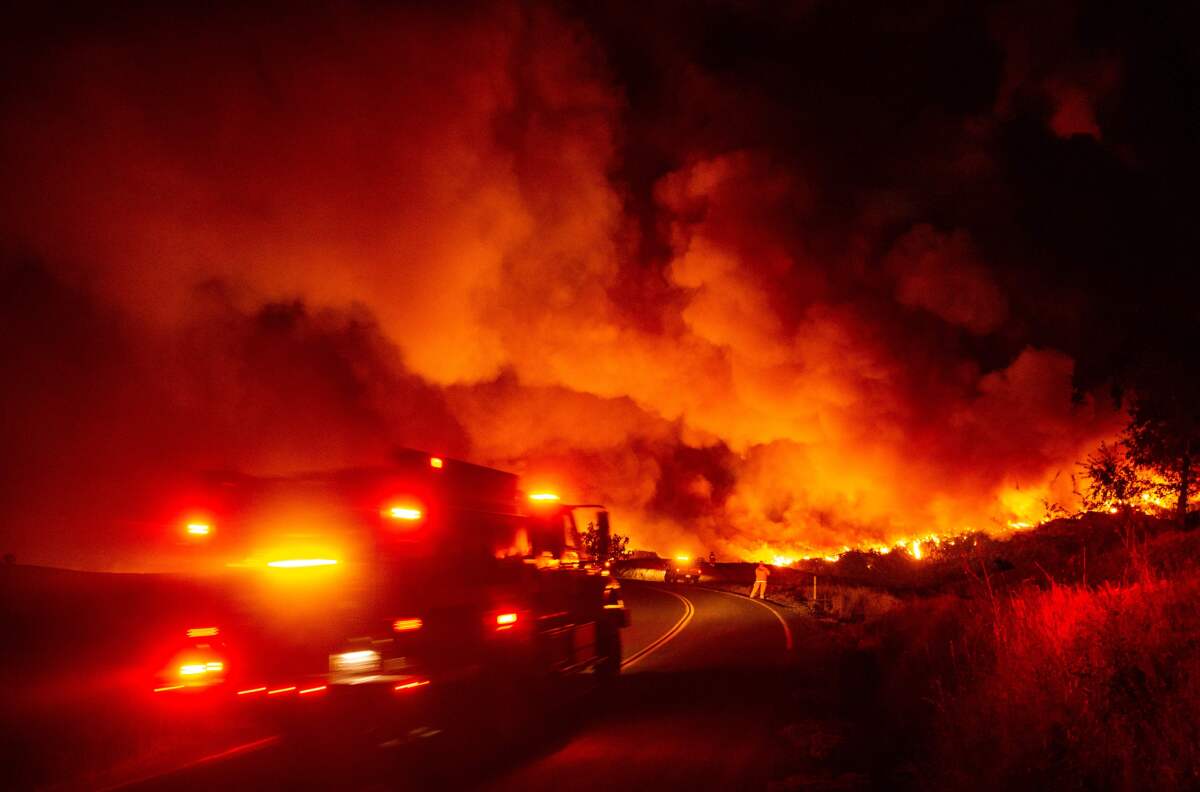Let’s face it: Preventing and fighting wildfires mean utility customers will have to pay more

SACRAMENTO — One silver lining has emerged from California’s horrific wildfires: The state and utilities are finally focused on preventing and fighting these infernos.
It’s long overdue, of course. It took an outraged public to light a fire under the politicians. And they pounded the utilities.
That’s the way the system’s set up to work. It’s just too bad that elected representatives tend to be reactive, not proactive. But that’s not just politics, it’s human nature.
“We’re safer today from utility wildfires,” says Patrick McCallum, a community college lobbyist who lost his home and barely escaped with his life during the wine country fires two years ago. He became the chief lobbyist for Northern California wildfire victims.
“With crisis comes change,” McCallum adds. “We’re safer because of all the investments that have been made, even if climate change conditions are getting worse.”
But as evidenced by the weekend’s windswept fires, a lot more will need to be invested.
And there’s one thing that hardly anyone — least of all politicians — is talking about publicly. That’s the inevitability of customers’ monthly bills rising to pay for so-called hardening of the electrical grid to make it less likely to ignite wildfires.
Updates such as metal poles, insulated wires and underground lines — plus a lot more aggressive tree trimming and brush thinning.
“This isn’t rocket science,” McCallum says, referring to the needs. No, but it is costly.
The legislators’ mantra is that ratepayers should be protected from being forced to dig deeper each month. Ratepayers vote.
But for bankrupt Pacific Gas & Electric Co., ratepayers are the only real source of money needed for modernizing the utility’s equipment and managing vegetation. Politicians point the finger at shareholders, but that’s a dry well. They haven’t been paid a dividend in two years, and PG&E stock has been tumbling.
PG&E’s electricity rates already are the highest anywhere and the company intends to jack them up more on New Year’s Day by an average of $9 per household. But I’m suggesting they need to go even higher to protect against wildfires.
Conditional support for that — perhaps surprisingly for some — comes from Mark Toney, executive director of the Utility Reform Network, which lobbies for consumers.
“More money has to come from ratepayers,” Toney told me. “People understand they’re going to have to pay more to invest in fire safety. But ratepayers need assurances — evidence — that it will result in better outcomes, not less service.
“People get that rates have to rise and they don’t expect everything to be solved overnight. But they need to see visible evidence of progress.”
PG&E could start with fewer power shut-offs affecting fewer people, he says.
Politicians began feeling the heat two years ago. They’ve appropriated barrels of money and passed a dizzying number of bills. The latest won’t take effect until January.
Gov. Gavin Newsom and predecessor Jerry Brown have poured an extra $1.2 billion into fire prevention and fighting over the last two years — new planes, new helicopters, more trucks, more vegetation thinning.
This year, a $21-billion fund was created for utilities held liable for wildfire damage. Shareholders and ratepayers will split the cost. Part of the deal is that PG&E must exit bankruptcy by next July.
No bill was more heavily lobbied as lawmakers held their noses against what smelled like a PG&E bailout, although it didn’t go that far.
Another part of the deal was that PG&E shareholders will be required to spend $5 billion on updated equipment and fire prevention.
When the Legislature reconvenes in January, there’ll be another flood of wildfire bills.
“Every senator and assemblyman is trying to think of something else to try,” says Sen. Bill Dodd (D-Napa), whose district was charred by the wine country blaze and is a leading wildfire legislator.
Like most lawmakers and the governor, Dodd is highly critical of PG&E. It “only got a third of the trees trimmed that it planned,” he says.
Toney, the utility reform advocate, has relative praise for Southern California Edison.
“Edison appears to be coherent,” Toney says. “It has put lots of pieces together — insulated wires, metal poles, fewer shut-offs. When we talk to Edison, we hear a disciplined plan. It sounds like a strategy.
“When we talk to PG&E, we hear desperation, disorganization and scattershot.”
There’s increasing talk of breaking up PG&E — allowing pieces to be sold to local communities.
“PG&E has become too big and failed Californians too many times,” says Sen. Mike McGuire (D-Healdsburg), whose district also was torched by the wine country fire. “All options need to be on the table to address these failures. One option is the state should consider breaking them up. They’re the largest utility in America with one of the worst — if not the worst — safety records in America.”
PG&E is also under threat of a hostile buyout by an investor group led by billionaire Paul Singer, a major Republican donor. (Full disclosure, my daughter is working with the group.) The bankruptcy court will make that call.
McCallum’s fire victims group is siding with Singer because he has offered $25.5 billion to cover wildfire liabilities, including $12 billion for victims. PG&E has offered $18 billion, $6 billion of it for victims.
“We think there needs to be a change,” McCallum says. “There have been too many mistakes for too long by PG&E putting homes and lives at risk.”
But maybe things got so bad they can’t get worse and are starting to get better. Look for the silver lining — and get ready for even stiffer utility rates.
More to Read
Sign up for Essential California
The most important California stories and recommendations in your inbox every morning.
You may occasionally receive promotional content from the Los Angeles Times.











